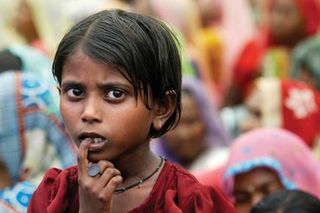Kainaat Mushtaq
PAMPORE, June 14: “The world’s best saffron grows here,” reads a signpost in south Kashmir near a vast swathe of grey-brown land ringed by snow-covered mountains.
But that’s little consolation for Shabir Ahmad Malik, a former saffron grower in the stunningly beautiful Himalayan region, who now runs a gold business.
“Illegal imports from Iran have hit the Kashmir saffron industry so badly that many of us had to change our business,” he says.
Kashmiri saffron, known in old Kashmiri texts as lover’s spice, was once the toast of every gourmet kitchen in the country.
Astronomical prices failed to deter Kashmiri chefs from stocking up onLife the spice, which is considered the best in the world. It is extensively used in Mediterranean and Mexican cuisine also.
But today, thousands of saffron growers in Kashmir have been forced to move to other businesses because cheaper imports from Iran are eating into their business.
Growers say Iranian saffron sells for a mere 45,000 rupees a Kg against the Kashmiri version which is costly at more than a 100,000 rupees. This, they say, is because of the latter’s superior quality and a labour-intensive process in its picking, drying and packing.
“Who will buy Kashmiri saffron?” asks grower Mohammad Yusuf, as he smokes a hubble-bubble pipe under a crimson chinar tree.
Business has also been hit due to neglect by the authorities because of a 22-year-old revolt in the region.
According to the state’s agriculture department, saffron production in Kashmir plummeted from 17,300 kgs in 1997 to 3,600 kgs in 2001 and is further on decline.
“Iranian saffron is sold under the Kashmiri brand name. It is sold not only in major Indian cities but in Kashmir also,” says Aijaz Ahmad, a leading saffron dealer.
‘Spice of Life’
Saffron has been grown in Kashmir since the Mughal period, which began in the 16th century when saffron bulbs – a species of crocus – were brought from Iran.
Cultivation is an elaborate and painstaking process: it takes about 170,000 purple flowers and many, many willow baskets to collect one kg (2.2 lb) of saffron.
On cold autumn mornings men, women and children in more than 200 villages in the Pampore area of southern Kashmir flock to the fields, pick the flowers and heap them into wicker baskets.
The bulbs of the Crocus sativa flower are sown on an estimated 17,000 hectares (42,500 acres) of well drained clay-loam land in May and June and the flower is harvested in November.
The flower’s reddish three-part stigmas are hand-picked and sun-dried before they find their way to market in December.
‘Efforts in vain’
Authorities say that, despite the problems, Kashmir has the potential to produce 30,000 kg of saffron a year.
The Jammu and Kashmir government says it plans to launch a series of initiatives to help production and marketing of the crop, which sustains more than 100,000 people.
“The government has decided to take up the issue of saffron imports with the central government (in New Delhi). And we are soon launching programmes for quality control and marketing and increase in production,” an official said.
But the National Saffron Mission launched by the government to provide necessary equipment for better production of the spice has failed to make much of an impact.
As of now the country’s chewing tobacco industry and pharmaceutical firms are among the leading buyers of Kashmiri saffron, which has several uses, apart from flavouring, ranging from religious offerings to medicinal cures.









